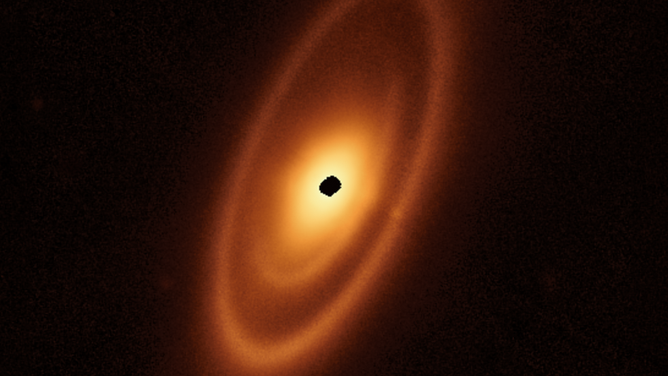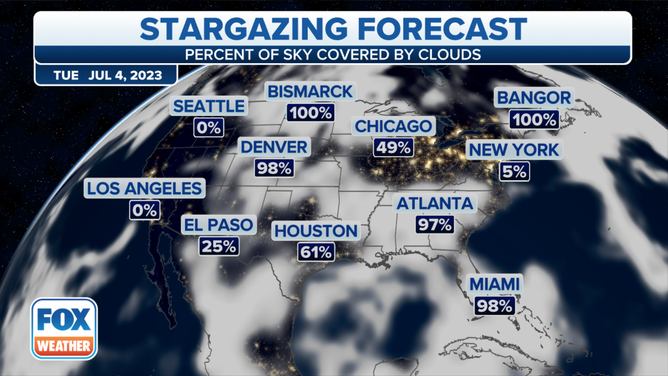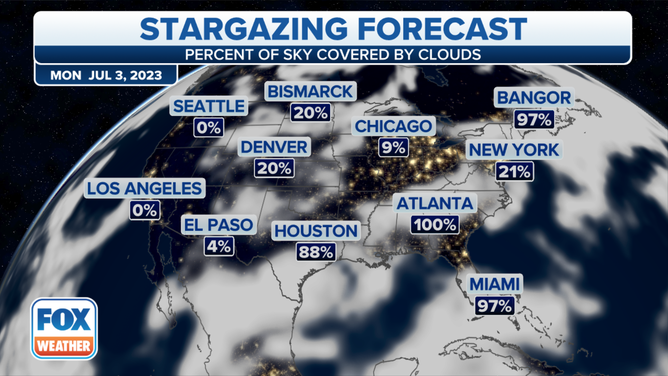Look up at the night sky for these July celestial events
Four planets will shine brightly for optimal skygazing opportunities, and the Full Buck supermoon comes early on July 3.
July astronomical event calendar
NASA Ambassador Tony Rice explains what sights will rank supreme in the summer night sky
With summer in full swing, there are plenty of opportunities to plan a night of stargazing, and July will offer opportunities to observe four of our eight planets.
July 3: Full Buck Supermoon
The full Moon comes early in the month, on July 3. This moon is known by its Native American name, the Full Buck Moon, because deer antlers are in full growth during the summer. Because the moon will be in its closest orbit to Earth, it will also be considered a supermoon. The effect of the full Moon and the close orbit will make it appear larger and brighter, but only by about 7%, according to the Farmers' Almanac.
With the Fourth of July the following day, the nearly full Moon will create a beautiful backdrop to fireworks and festivities on America's birthday.
Most of July: Mars, Venus, Saturn and Jupiter
Both Mars and Venus will appear in the western sky throughout the month. Mars will be most visible during the second week of July when it's closest to the star Regulus.
Saturn and Jupiter will grace the sky in the early-morning throughout July, which is good timing for those facing record-hot temperatures.

This image of the dusty debris disk surrounding the young star Fomalhaut is from Webb’s Mid-Infrared Instrument (MIRI). It reveals three nested belts extending out to 14 billion miles (23 billion kilometers) from the star. The inner belts – which had never been seen before – were revealed by Webb for the first time. (Image Credits: NASA, ESA, CSA, A. Gáspár (University of Arizona). (Image processing: A. Pagan (STScI))
(NASA)
According to NASA, Saturn will be joined by the bright star Fomalhaut.
The star is an estimated 440 million years old, young for a star, and NASA's James Webb Space Telescope recently revealed new details about Fomalhaut's dusty debris disk.
July 18: Spot the Milky Way core
A new Moon will provide a dark sky perfect for viewing our home galaxy, the Milky Way.
On July 18, by looking to the south, if you are far enough away from city lights, the core of the Milky Way will be visible.
According to NASA, this band will be packed with stars and dark clouds of dust.
The view will be spectacular if you can view the Milky Way from a dark sky location. The International Dark Sky Program has a map of places around the U.S. with a "dark sky" certification. The farther away from light pollution you are, the more vibrant the Milky Way will appear. Western and Southwestern states have more parks and dark sky designated locations to choose from.
Wildfire smoke may complicate skygazing
Smoky red moon rises over Philadelphia
A time-lapse video shows a nearly full moon rising over Philadelphia Monday night. The moon appears in a smoky red hue because of wildfire smoke from Canada invading the skies across the Northeast.
A quick note about something to consider this month before planning a camping trip with skygazing on your activity list:
The northern U.S. faced incredibly hazy conditions throughout June due to the smoke from wildfires in Canada. Heading into July, conditions are still dire in Canada, with nearly 500 active fires burning to our north.
Smoke particles have created unhealthy air quality for millions and sometimes tinted the moon red. Check the air quality map before heading out for a night of star gazing.



